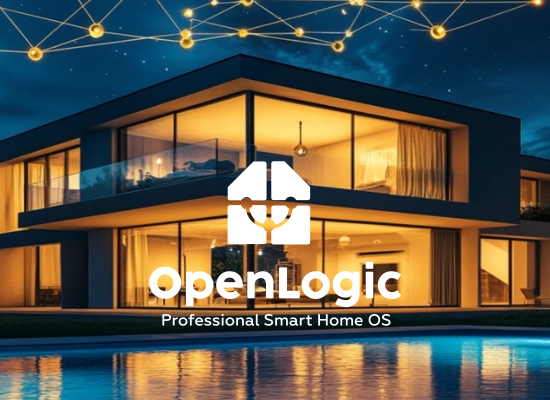Introducing OpenLogic — Why This Matters
For over two decades, I’ve worked in the high-end residential automation space — designing, programming, and delivering fully bespoke systems for demanding clients. It’s a world where flexibility, control, and customization are non-negotiable.
But over the years, something shifted in the industry. Powerful platforms that once celebrated integrator skill and creativity began drifting toward simplicity — and rigidity. Visual programming became drag-and-drop templating. Deep customization gave way to glossy interfaces with fixed logic underneath. And suddenly, we were no longer programming systems… we were just configuring them.
OpenLogic was born out of that frustration.
The Why
At its core, OpenLogic is a professional-grade smart home operating system — but with a twist: it’s fully open, fully transparent, and built for integrators who still want to think, design, and solve.
It brings back the things we loved:
- 🧱 Modular, reusable logic — written in a clean, declarative syntax
- 🧠 Event-driven programming with structured signals and modifiers
- 🎛 Custom UI design that’s not locked to a template or app store
- 🌐 Rich integration with modern ecosystems — and legacy ones
But it also introduces a new model:
- 📂 DSL-based logic files — readable, shareable, version-controlled
- ⚙️ A portable runtime that can run anywhere: NUC, Pi, VM, or container
- 🔗 Open APIs and an open module library for devices, platforms, protocols
- 🤝 A commitment to community-led development and collaboration
This Is About Choice
OpenLogic isn’t a product designed to replace everything. It’s a foundation — a framework. Something that gives back choice to the integrator, and ultimately, to the client.
If you want total control over the experience, OpenLogic gives you that. If you want to mix and match devices and protocols — from Lutron to MQTT, from Modbus to Home Assistant — you can. If you want to build logic that would take 10 modules and a compiler in a legacy system, but write it in 3 lines of readable code — it’s possible.
What’s Next?
OpenLogic is being built in the open. The GitHub repository is live, the roadmap is public, and the first wave of core modules are being developed right now. We’re building a bridge for integrators to cross — from proprietary tools to an open future.
TxRxSystems is here to support that vision with consulting, support, and eventually, hardware purpose-built for OpenLogic deployments.
This is just the beginning. If you’ve ever felt like the platforms you use are becoming too closed, too generic, or too constrained for your clients’ needs — I invite you to explore OpenLogic.
Let’s bring back creative control. Let’s rebuild the smart home OS from the ground up.
— David
🌐 OpenLogic.dev







No Comment! Be the first one.